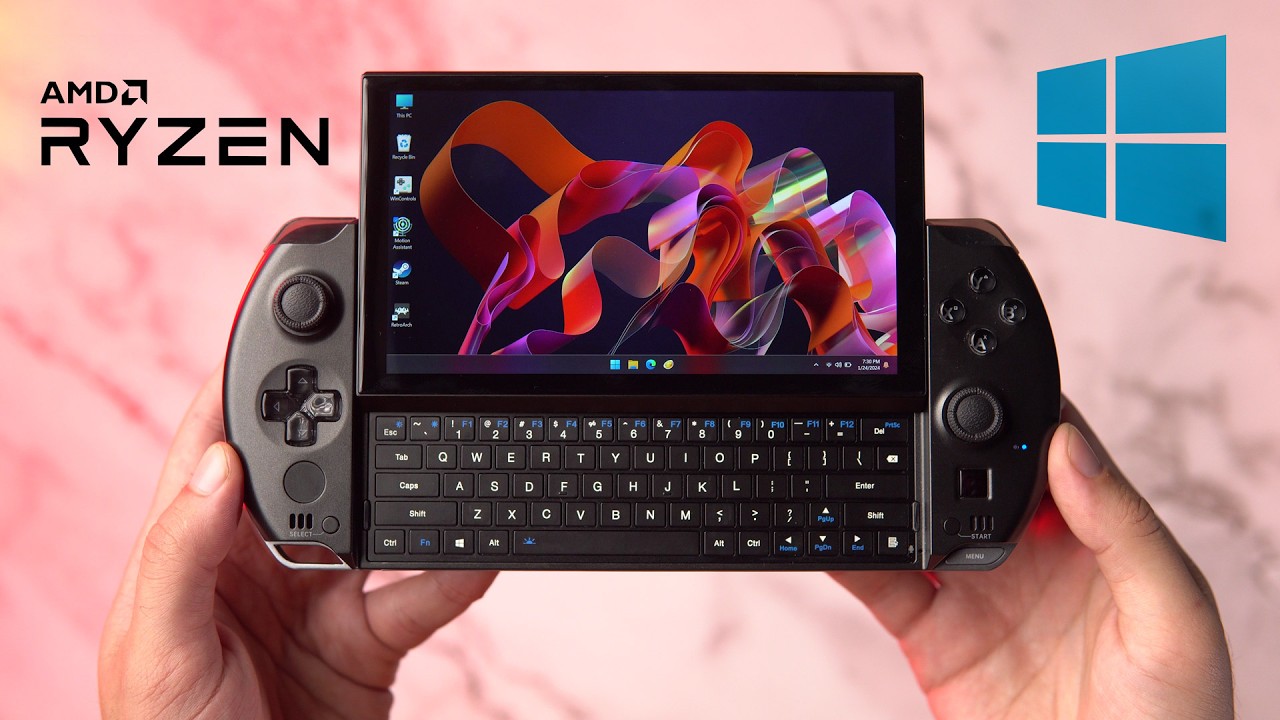We Need to Talk.
Summary
TLDRIn this video, Taki discusses the evolution of his channel and his approach to reviewing handheld gaming devices. Initially created as a resource for himself, it has grown to include monetization for his son's college fund. Taki reflects on the challenges of maintaining a comprehensive review process, the importance of addressing device issues, and the need for transparency. He announces a new strategy of providing short, objective assessments for devices he can't fully review, aiming to better inform his audience.
Takeaways
- 🎮 Taki started the channel to create a college fund for his son and to share information on handheld gaming devices.
- 👶 Initially, Taki's goal was to review every device, but he later became more selective due to burnout and the repetitive nature of some devices.
- 📐 Taki emphasizes the importance of being transparent about the issues he encounters with devices, even if it means presenting a counterpoint to popular opinion.
- 📺 He discusses the challenges of reviewing devices before their official release and the potential for discrepancies between pre-release and retail versions.
- 🔍 Taki highlights the importance of his role in informing companies about issues with their devices, to help them improve and address problems.
- 💡 He plans to be more proactive in using his platform to make companies aware of device issues, believing it benefits both the company and the consumer.
- 📝 Taki intends to change his review approach by publishing short, objective lists grading devices on specific issues with a pass or fail.
- 🛠️ He illustrates how he deals with issues by providing examples, such as the screen problems with the RG405M and the performance issues with the Miyoo A30.
- 🔄 Taki points out that sometimes third-party OS updates can fix issues that the manufacturer's own software does not address.
- 🤔 He acknowledges the limitations of his selective reviewing process and the risk of missing important issues with devices that he does not review.
- 📈 Taki's realization about the need for change in his approach is driven by his experience with the RG35XX Plus and H, where he discovered a stuttering issue that had been present but unnoticed.
Q & A
Why did Taki disable monetization on the video?
-Taki disabled monetization to discuss important matters without the influence of financial incentives.
What were the two main reasons Taki started the channel?
-Taki started the channel to find a handheld device to use when his son was napping and to create a college fund for his son through AdSense revenue.
How did Taki's experience with the initial handheld device lead to the creation of the channel?
-Taki's dissatisfaction with the first device he bought based on reviews, which had unmentioned issues, led him to review the Anbernic RG350, which helped monetize his channel.
Why did Taki decide to be more selective about the devices he reviews?
-Taki felt burnt out from reviewing too many similar devices during the RK3326 saga and wanted to focus on devices that genuinely interested him.
What issue did Taki encounter with the RG405M's screen?
-The screen on the RG405M was overly sharpened, making retro games look poor, and the screen started to fall out from the shell.
How did Taki handle the screen issue with the RP4 device?
-Taki detailed the screen issue in his review, explained how it could be fixed, and discussed the consequences of the fix.
What realizations did Taki have while working on the buying guide video?
-Taki realized that companies need to know about their devices' problems and that his selective reviewing approach doesn't work due to the possibility of missing critical issues.
Why did Taki decide to publish a short, objective list for devices he doesn't review?
-Taki wants to provide more information to help viewers make informed decisions even when he can't produce a full review.
What was the issue with the Anbernic RG35XX Plus and RG35XX H devices?
-The devices had a stuttering or frame pacing issue with the screen that was introduced in a software update and persisted in subsequent versions.
What was the performance issue with the Miyoo A30 that Taki discovered?
-The A30 had a display filter enabled by default that caused performance issues, which could be fixed by disabling the filter.
How does Taki plan to approach reviews differently going forward?
-Taki plans to publish objective lists with pass or fail grades for certain categories for devices he doesn't review in full, to provide more information to his viewers.
Outlines

This section is available to paid users only. Please upgrade to access this part.
Upgrade NowMindmap

This section is available to paid users only. Please upgrade to access this part.
Upgrade NowKeywords

This section is available to paid users only. Please upgrade to access this part.
Upgrade NowHighlights

This section is available to paid users only. Please upgrade to access this part.
Upgrade NowTranscripts

This section is available to paid users only. Please upgrade to access this part.
Upgrade NowBrowse More Related Video

NÃO É POSSÍVEL QUE ISSO SEJA UM COMPUTADOR: GPD Win 4

The Future of Camodo Gaming...

My Favorite Retro Handhelds of 2024 (So Far)

The Most Innovative Mobile Technologies

DF Retro Direct: Chris Huelsbeck Interview - Star Wars, Factor 5, Turrican and more!

An Inspiring Story of Dynamo Gaming | @DynamoGaming Biography
5.0 / 5 (0 votes)